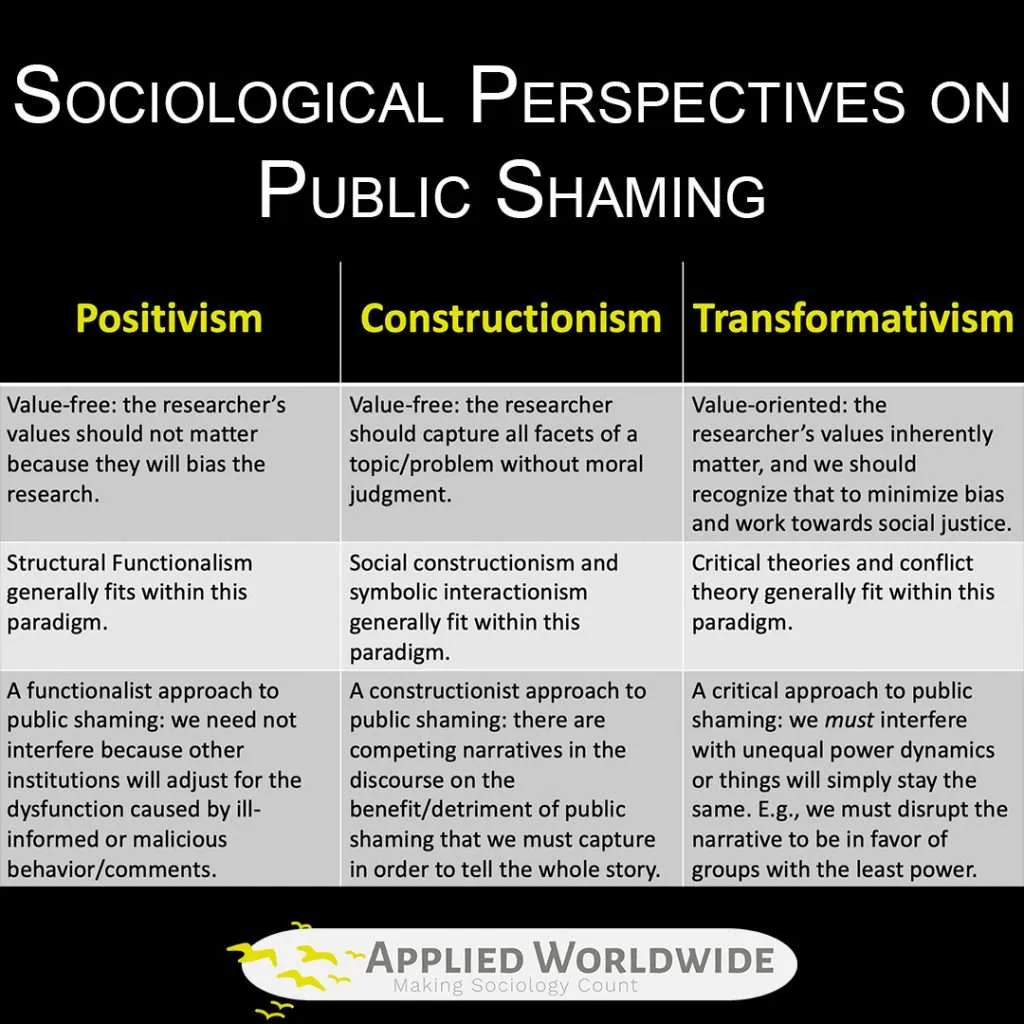How I managed to turn a heated class discussion about public shaming and cancel culture into a lesson on sociological research paradigms.
I recently had an experience regarding public shaming in the sociology classroom that left me stunned. As a new instructor, I felt a bit like a fish out of water trying to alleviate the tension in the classroom. I’ve been reflecting on the experience a lot, and in light of related press I’ve decided to put those reflections into a formal piece of writing.
in 2019, President Mitch Daniels of Purdue University made horrendous comments about an African American scholar being “one of the rarest creatures in America.” These comments called for press publicly shaming Daniels for his choice of dehumanizing and racist language.
There has also been recent press on Indiana University Professor Eric Rasmusen for publicly proclaiming discriminatory views on Twitter. In response, executive Vice President and Provost of Indiana University Bloomington, Lauren Robel, issued a public statement shaming Rasmusen for his “sexist, racist, and homophobic views,” and saying, “the First Amendment is strong medicine, and works in both ways.”
I share these stories because they assisted me in my reflection process after a heated discussion around public shaming as a social problem in my classroom.
Background into my Class’s Discussion
I assigned group projects this semester in my social problems course. Broadly, I tasked the students with choosing a social problem to investigate. More specifically, I asked them to:
- Identify the problem using sociological criteria for identifying social problems,
- Analyze the public discourse surrounding the problem,
- Identify what’s missing in the solutions proposed in the discourse, and
- Propose their own, new-and-improved solution(s) to the problem.
After introducing them to research paradigms early in the semester, we took a constructionist approach to social problems. So, although I familiarized them with other research paradigms, such as positivism and transformativism (also known as critical theory), the majority of their work this semester has been from a constructionist perspective.
With that said, the solution-centered focus of their final projects allowed them to tap into the transformative, social justice approach a bit, which has been exciting to watch as an instructor. Their topics for their final projects spanned a diverse array of social problems from racism in education and the media to political polarization and stigma and sex education in the U.S.
Their dedication to understanding their topics of choice and finding realistic solutions to those problems has been amazing to witness. However, one groups’ presentation ironically ended with a demonstration of the very problem they were identifying: public shaming.
The group presenting on public shaming was tying the phenomenon to the internet and the increased ability for folks to find anonymity and deindividuation online. The discourse they analyzed constructed public shaming as a social problem in and of itself. A more rigorous discourse analysis might have also found that public shaming online is discussed as a solution to another problem: the expression of racist, homophobic, xenophobic, and sexist views online. This narrative suggests we should publicly shame folks who express such discriminatory views online.
As one might imagine, both narratives came up during the Q&A following the presentation. These competing narratives came up specifically when discussing the case of Kevin Hart being publicly shamed out of hosting the 2019 Academy Awards. A large enough number of students felt this case of public shaming was necessary and warranted, while the group presented the case as an example of public shaming gone wrong. This caused a fairly heated discussion between students right as class was ending, not allowing me time to address the arguments before students started filtering out for the day.
Reflection on my Class’s Public Shaming Discussion
I spent the remainder of the day reflecting on how I could extinguish the flames during the next class meeting. With the help of my partner, I realized what I needed to do: put the discussion back into the context of the class. How do we make sense of these contrasting approaches to public shaming using sociological theory and research paradigms?
What I came up with was the table below:

This table presents a fairly simplified view of an incredibly involved literature on research paradigms, but simplified was exactly what we needed to take a step back and clear the air for our last day of presentations. The heated discussion left students so uncomfortable that the last group presenting asked me if I could stop the Q&A if it got out of hand again. I also had a couple of students email me about the way class ended.
I’ve never been shy about my value-orientations within sociology in the classroom. My students know I am a primarily transformative scholar whose research aims to increase social justice, but I wanted to be clear that engaging in a positivist approach to social problems is equally as valuable according to the discipline (although, I do think that may be changing).
My personal opinions about public shaming aside, sociology provides a way of making sense of the problem through a variety of perspectives, and I don’t think I’d be doing my job as an educator if I only presented the perspectives I’ve personally adopted as a sociologist.
Course Design and Dealing with Challenging Student Questions







